WipEout Omega Collection: remaster, revamp or remake?
In-depth comparisons showing how Sony transformed a classic for the 4K generation.
One of the best-looking games on PS4 and PS4 Pro, WipEout Omega Collection revives a much-loved series for a new generation. Combining WipEout HD, Fury and 2048 in one package, developer Studio Liverpool's memory lives on in this excellent remaster. And thanks to the talent at Clever Beans, EPOS Game Studios, and Sony XDev Europe, we have a release that not only pays homage to a genuine classic, but also stands tall as a fully viable, modern PlayStation 4 release with some impeccable technical credentials.
It's also a fine example of scalability between PlayStation 4 and its super-charged Pro stablemate. Similar to Horizon Zero Dawn, the main difference really is in resolution, and visuals are otherwise the same for both. A regular PS4 renders at a native 1080p with 4x8 EQAA (Enhanced Quality Anti-Aliasing) - a proprietary AMD technology that has been deployed in both PS4 and Xbox One titles, including Forza Motorsport 6. PS4 Pro offers the same solution, albeit at checkerboard 2160p with motion blur enabled, or native 4K with the effect turned off. Despite older marketing suggesting that WipEout Omega Collection renders with a dynamic resolution, we can now confirm that it's native 1080p on base, 4K on Pro. Put simply, the final code doesn't need to adjust pixel-counts on the fly.
On top of that, not only is the framebuffer locked, the performance level is too. Even on demanding circuits with lots of weapons, neither console buckles from 60fps, even at the congested starting grid. It's a rock-solid line on either PS4 machine, with v-sync always engaged. 60fps isn't to be taken for granted in WipEout, and even the PS3 version struggled to hold that number at times. A weapons-fuelled slice of WipEout HD Fury action could see PlayStation 3 drop sporadically to 45fps. That's all completely ironed out on PS4 and PS4 Pro, and we're also happy to report that two-player split-screen also holds native 4K at the same rock-solid frame-rate - no mean feat bearing in mind that the console is processing two sets of geometry, one for each viewpoint.
So, with resolution and performance confirmed at optimal levels, the focus changes to the actual quality of the remastering work. WipEout HD on PS3 achieved its 1080p60 performance by taking the assets from the PSP titles as a basis, then rebuilding them to PS3 spec in a process that could take up to eight months per circuit (according to our our conversations with Studio Liverpool, back in the day). In a sense, the original PS3 release was a remaster in itself.
The Omega Collection for PS4 feels like the next generation of this work. It's not just the 4K resolution boost that takes this title to the next level. On top of the new textures and geometry, a form of tone-mapping is in place to give those colours extra punch - plus new effects like heat haze, and bloom make the cut. It's also great to see weapon effects like missiles use higher quality, sharper alpha this time. By cutting out the dynamic res, and fixing to 4K, everything looks sharp even when firing on all cylinders with all racers on screen.
Clearly though, it's WipEout 2048 that benefits most from the remastering work. PlayStation Vita was a technical marvel for its day, but it still operated within a highly constrained mobile spec. Looking at the comparison shots and video, the Vita version doesn't really hold up - but bearing in mind that 4K resolution amounts to something like 16x the original resolution of the title, that is to be expected. The game was designed for a five-inch mobile screen, and at the time it looked stunning, but clearly a lot of work was required to transform handheld-optimised assets for the 4K era.
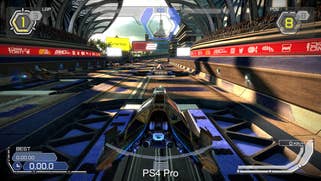
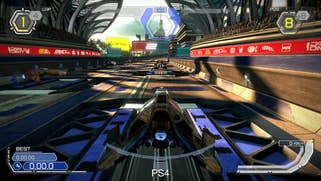





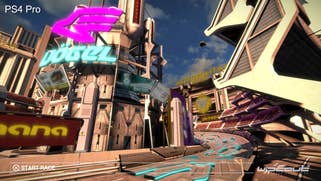

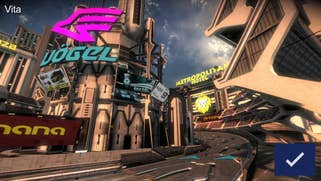
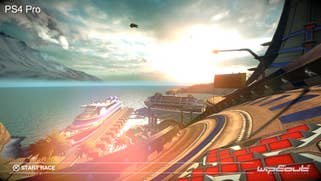
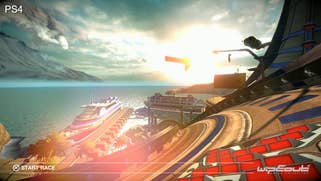

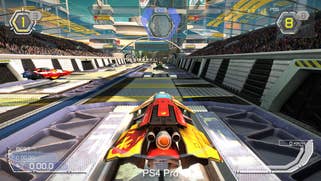
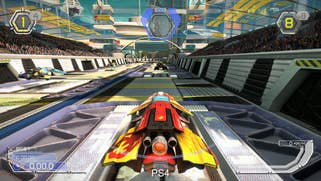
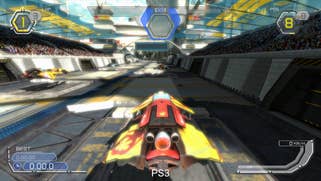
Just like the PS3 games, textures are reworked across the board to support PS4 Pro's 4K output. You get higher quality textures, but also parallax maps, adding a three-dimensional quality to some surfaces. The rest of the changes are too numerous to count, but clearly the second biggest change is in lighting. Global illumination is used on PS4 Pro now - and the new materials across each circuit show off a brighter, higher contrast result.
Curiously, you can see large lens flares at the back of each racer on Vita which didn't make the jump to PS4 Pro, and it's likely these were added on the handheld version to make the competition visible on the smaller screen. In the end, the layout of the circuit is identical, but with screen-space effects like bloom especially, the shift in lighting completely transforms a circuit. It's worth stressing a lot of geometry here is increased in poly count too, with far less aggressive level of detail settings compared to Vita.
The improvements to WipEout 2048 just continue to stack up. Shader work is substantially improved, especially noticeable in water rendering. And of course, shadows are rendered at a higher resolution now, with PS4 Pro letting all objects cast shadows across the ground - while Vita strips some out to save on performance. This is not an issue for PS4 and Pro, where the Omega Collection continues to hit its sustained 60 frames per second frame-rate.
The fact we're doubling performance makes the game much easier to control. But it's more than that; even with a dynamic resolution to soften the blow, Vita had some frame-rate drops into the 20-30fps region, which came bundled with screen-tear as well. There's only so much a portable released in 2011 can do to contend with so much fast action, and alpha effects from missiles were usually the culprit.
At the time, Vita was certainly playable like this, but only on its own terms. For higher speed classes you were at a clear disadvantage, especially in online cross-play against the PS3, which ran mostly at 60fps. It was a compromise you accepted though, and again you have to give a game like this credit for running on a portable machine. That said, the remastering process has given this excellent title a chance to shine, liberated from its original, limited host hardware.
The icing on the cake - for those with the display technology to advantage - is the push for high dynamic range, which heightens the contrast in a way that works brilliantly. In a similar vein to No Man's Sky, WipEout can rely on darker environments with streaks of bright neon, which stand out vividly with HDR enabled. Brighter levels like Sol are less impressive, simply because there's inherently less range between white and black there - but overall the implementation is excellent on PS4.
It's been almost a decade since WipEout HD first landed on PS3 - an early sign of what the console could push to. Today, Studio Liverpool may be gone, but the Omega Collection is a joyous celebration of all their hard work, brought up to date with pitch-perfect remastering effort. It may be a last-gen game at its heart, but running these upgraded assets at optimal resolutions and frame-rates once again makes WipEout feel like a cutting-edge release.
So is the Omega Collection a remaster, revamp or remake? Going back to the original developer's work, Studio Liverpool actually went one step forward - it took existing assets, rebuilt them for a new console generation and integrated them into what was effectively a whole new game. With the Omega Collection, there's a similar process here in vastly improving assets fit for the PS4 era, but the crucial difference is that the core gameplay and structure remains the same. And yet it still looks and feels like more than a remaster - and in our hearts, we'd prefer to think of it more as a proof-of-concept for a new game that revitalises an iconic PlayStation franchise.



